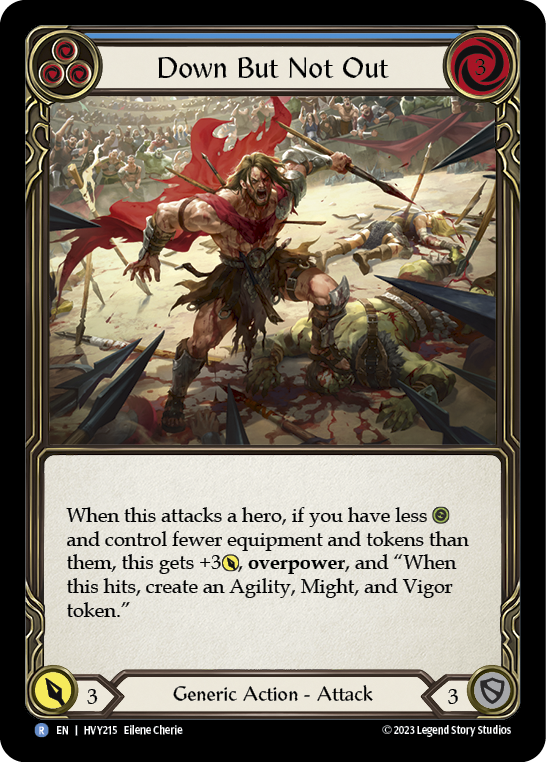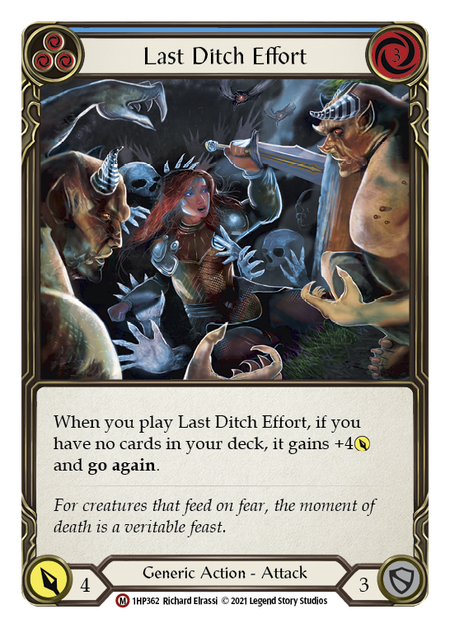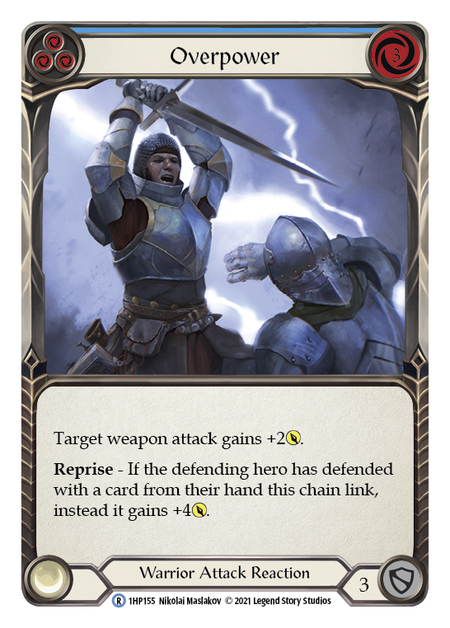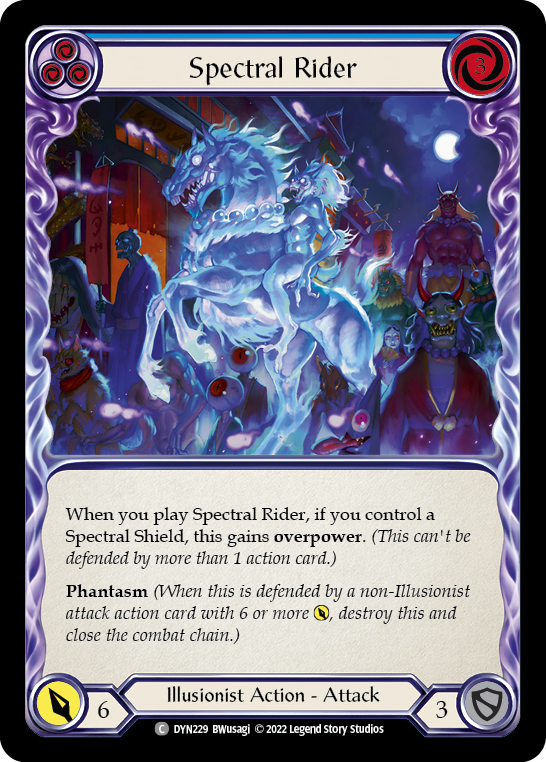We all know the rules of the pitch cycle: for any given card in yellow, a red version (which pitches for 1 less resource) will generally have a +1 somewhere on it, while the blue version (pitching for 1 more resource) will have a -1 somewhere. Over time, we've all kind of settled on a lens that views the red version of a card as 'baseline', which means playing out any blue card comes with a -2 to its efficiency; this is a perception burden that blue cards carry even as they appear outside of cycles. The cards below illustrate this - and note, they are not Part the Mistveil previews.
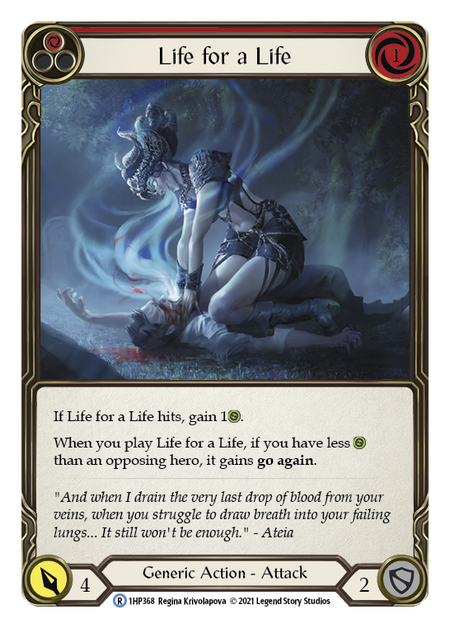
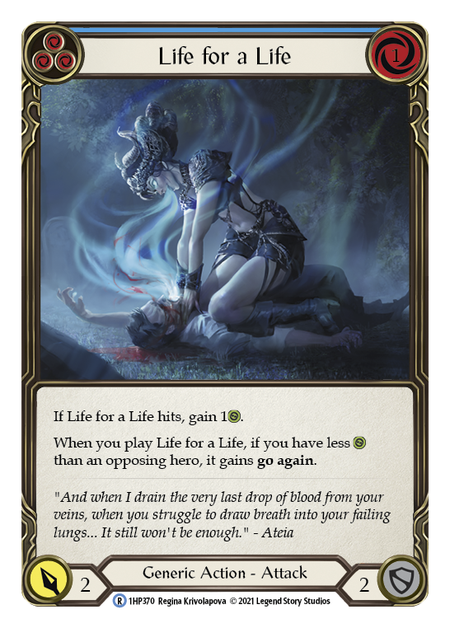
But for many decks - and especially those found in Part the Mistveil - blue cards are essential. Most cards serve three roles: as resource, as defense, and as their own intended use. That blue stripe represents the pinnacle of efficiency in the first of those roles - pitching a single blue card provides 3 times the resources of a red-stripe card.
Pitching, as a mechanic, presents a second concern that informs our card selection: as the game progresses into the second cycle, we'll encounter the cards we've been pitching - and if we've been pitching blues all game, these blue-heavy hands can present underwhelming threats.
In Part the Mistveil, we're introduced to the transcend mechanic, which involves transforming cards into pure resource cards - Inner Chi fuels our hero powers and ensures we can pay for anything we may need, but it has no purpose beyond acting as a special blue resource. (Once more, the card below is not our spoiler - we'll get there soon!)

When facing the threat of a flood of blue cards in the late game, how do we build for success? As always, by focusing on efficiency.
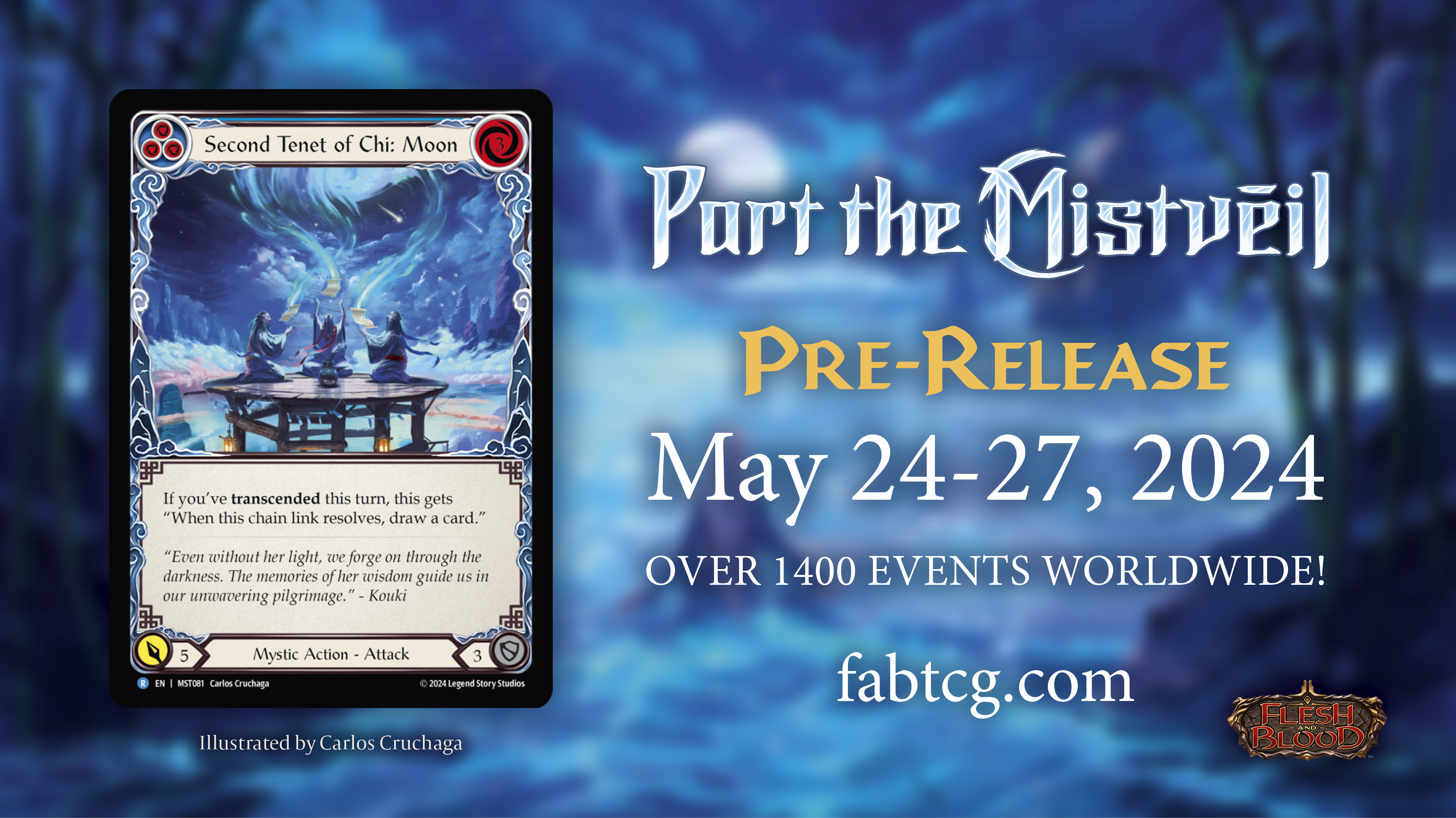
What I love about Second Tenet of Chi: Moon is that it's realistic about the state of the game when you're considering playing it out (rather than pitching it). As a 3-cost attack, it takes full advantage of the rules of stat distribution to pack as much damage as its allowed to, at the cost of another blue card you're certain to have in that late-game hand. And it gives you a solid 3 defense as well!
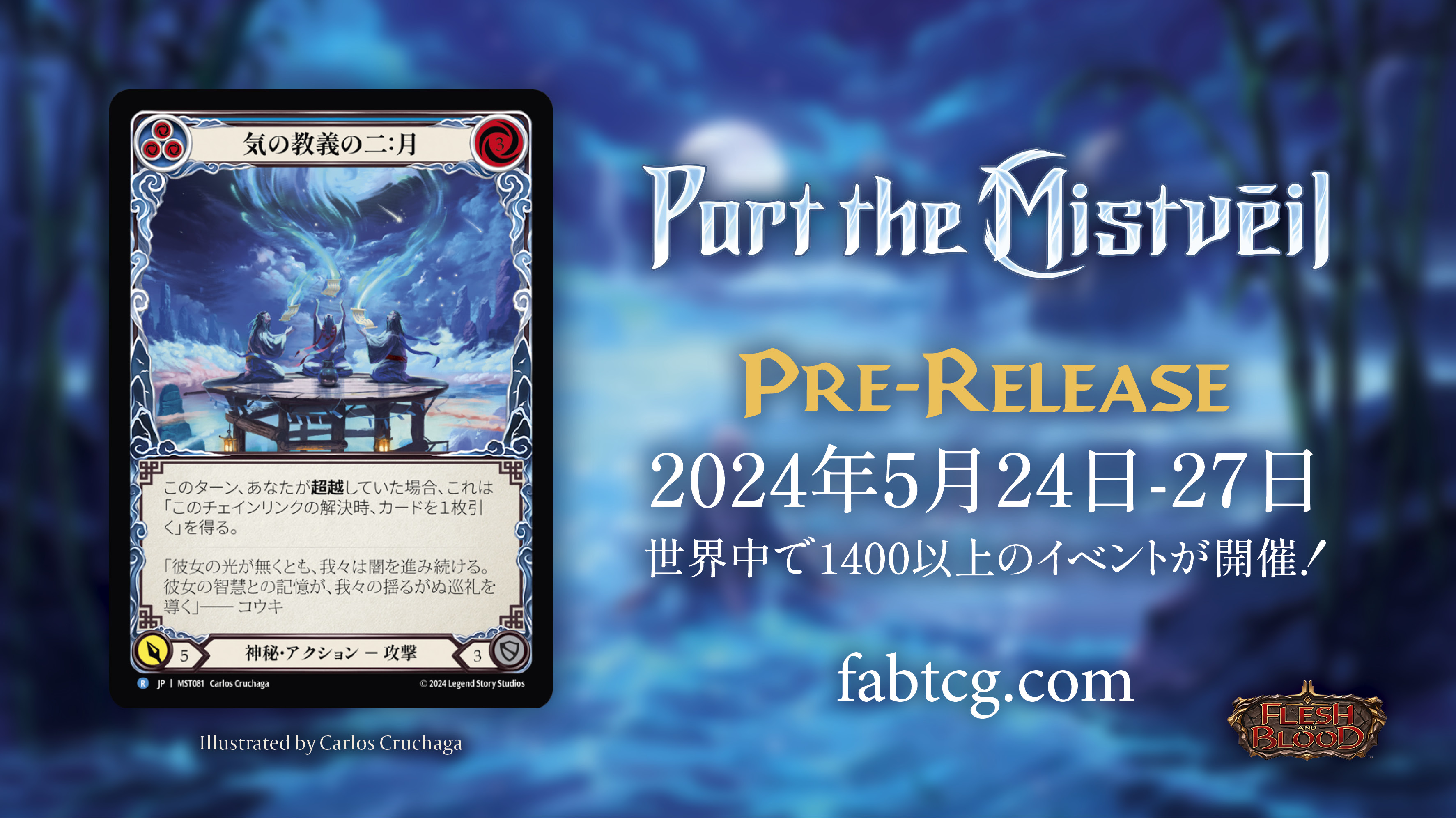
Of course, the interest in a card always comes in the text. Second Tenet of Chi: Moon stays closely tied to the theme of the set, offering you card draw if you've transcended this turn. This fits well with decks that would rather wait until the 2nd cycle to attempt to transcend - a feat that's more easily accomplished at that point anyway due to the heavy concentration of blue cards you've pitched all game. An ideal SToC:M turn might look like this:
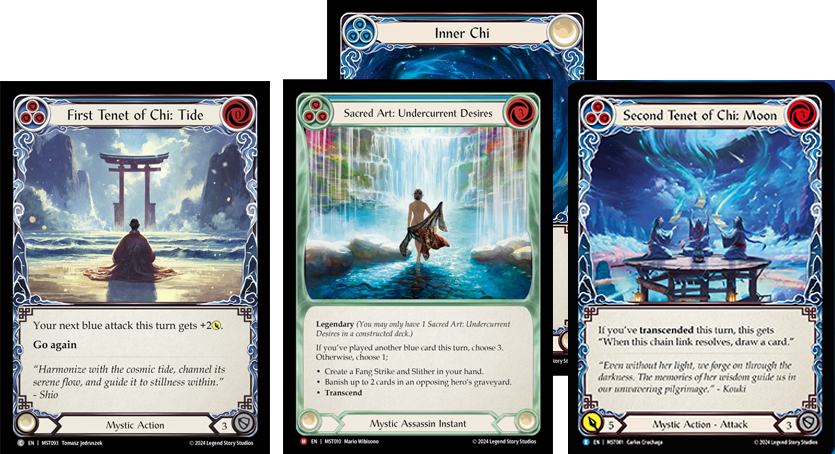
Play First Tenet of Chi: Tide (previewed by @OeilOphidia) followed by Sacred Art: Undercurrent Desires (we're a Nuu deck I guess), pitching a blue to pay its cost. When Undercurrent Desires transcends, it returns to your hand as Inner Chi, which we'll pitch to play Second Tenet of Chi: Moon. That's now an attack for 7, with 2 reactions in hand; and regardless of whether or not it hits, we'll draw a card that we can either play out with our returned action point or slip into arsenal. All off a hand of 4 blues!
The second cycle won't be relevant for every deck - and for those that don't expect to find themselves drawing all-blue hands in the late game, Second Tenet of Chi: Moon doesn't hold much appeal. But Part the Mistveil has gone out of its way to reinforce strategies that utilize a high number of blues, and any Mystic hero that can't be described as 'all-out aggro' should be prepared for this game state to come up on them at a critical juncture.
Outside of Mystic heroes, here are a few blue cards from past sets that perform similar roles as strong tools in the late game after serving as pitch cards early:

